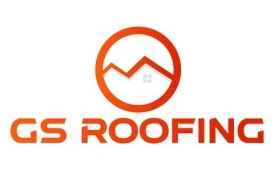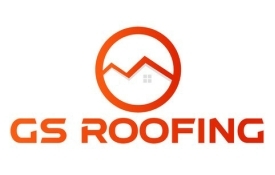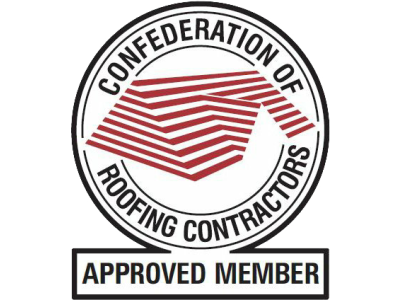Blog
Categories
-
0 WHY IS SUMMER THE BEST TIME TO CHECK THE ROOF FOR PROBLEMS?
- Roofing Advice
- by Administrator
- 27-05-2022
0.00 of 0 votesDuring the summer the weather is nicer and drier! you may find you do not experience the typical leaks that some do during the wetter months however this is the best time to give your roof a check over to avoid those costly emergency repairs! Ventilation: Without ventilation such as tile vents and air bricks, moisture can build in the loft with the additional summer heat and the cooler nights this can cause the rafters inside your roof to rot and in turn weaken affecting the structure of your home. Pop into your loft, Check for damp/mould spots and or a musty smell, if you do come across anything contact a roofing contractor such as GS Roofing to provide a FREE quotation upon their findings. Sun light: The roof is the highest point of your home and is constantly absorbing the UV radiation from the sun, depending on the type and colour of your roofing tiles as some absorb the radiation quicker than others. Look up at your roof you will notice that the shingle is coated in a UV protection over time these little pebbles will fall off and gradually the roof will get worse leaving holes and no protection from the elements. If any shingles need replacing contact a professional who will be able to replace these avoiding keeping your property safe. Moss: If there is a wet summer or you have a north facing roof and high trees near your home, you will need to regularly check for moss growth as when leaving moss, it will eventually start to anchor to the tiles making it increasingly difficult to remove. When this happens, your roof will be in danger to excessive moisture as moss acts like a sponge and will help the moss growth, in turn stripping the protective oils from the shingles and making them susceptible to erosion and sun damage, if ignored the buildup of moisture will begin to invade your home leading to rotten rafters and damp. To remove moss never use a pressure washer as this can cause further damage to the shingles and tiles, always contact a trained roofer who will be able to remove the moss safely and effectively.
-
0 The benefits of concrete roof tiles.
- Roofing Advice
- by Administrator
- 07-02-2022
0.00 of 1 votesMillions of homes are adorned by concrete roofing tiles, featuring those manufactured by brands such as Redland, Marley and Sandtoft. Boasting a diverse array of brilliant practical advantages as well attractive visual appeal, concrete tiles have become a favourite within the roofing industry and homeowners across the UK. Despite the proven advantages many homeowners are torn as to which tile is best for your project. We will talk you through the benefits that concrete tiles have to offer to help you decision be an informed one: Tile manufactures have spent decades sourcing the best materials and refining their formulas to ensure high levels of strength, resilience, and durability. Concrete tiles are becoming stronger and able to withstand harsh weather conditions such as the camber tile which shows the impressive techniques used in the manufacturing of these tiles as they have introduced a slight curve into the tile to reduce the ability to lift and to overcome any bowing that naturally occurs throughout the lifespan of the tile. Marley a leading tile manufacture have created a fully durable and robust concrete tile with a 30mm thickness that can withstand even the harshest of weather conditions. Concrete tiles have a range of styles to suit your needs and style raining from the plain tile to the double roman or the pantile, ranging from natural brown, contemporary greys, gorgeous greens and the deepest of reds the choice is completely yours! The Colour piment used in these tiles not only ensures a great consistency while laid on the roof but also ensures the colour is fully maintained throughout the ageing process. While minor breakages can occur, Concrete tiles are generally very low maintenance. The only real work that is required after the installation of concrete tiles is clearing the moss every few years to ensure the tiles are well maintained and stay looking and performing at their best! When it comes to energy efficiency of your home, concrete tiles are a better option as they have a heavier thermal mass which in turn helps trap the heat during the winter effectively controlling the indoor temperatures and cuts down your energy bills. To conclude, Concrete tiles are long lasting, affordable, and low maintenance with the constant improvements in the manufacturing stages this tile can only improve.
-
- Roofing Advice
- by Administrator
- 07-02-2022
0.00 of 1 votesWhen discussing the elements of roofing there are many different terms to deal with. I have put this glossary together to help explain the main terms that we use in the industry. Back gutter: A gutter formed in lead usually at the rear of the chimney however it can be formed behind any other structure. This disperses water on the tiles/slates of the roof. Barge board: These are fixed along the edge of the gable. Course: Horizontal row of tiles. Dormer: A framed window unit which projects through the slope of a roof. Eave: The eaves are the edges of the roof that overhang beyond the side of the structure it covers. Fall: The small slope on a flat roof, designed to effectively disperse rainwater. Flashing: Strips of lead used to prevent water penetration. The “code” refers to the thickness. Code 3 – 1.32mm to Code 8 having a thickness of 3.50mm. Gable: The triangular shaped section of wall that sits between two joining sloping roof sides. Hip: The hip is the external angle at which the adjoining sloping sides meet. Hip Bevel: The hip bevel is the degree of the angle where the sloping sides meet. Hip End: The hip end is the sloping surface at the end of the roof structure that is formed by the hips joining at the ridge. Hip Iron: A metal hook, which is secured to the roof structure to add additional support to the hips tiles to prevent them from slipping. Parapet wall: Low protective wall that extends above the roof line for support. Pitch: The roof pitch is the steepness of the roof or its slope, calculated as a ratio or in angular degrees. Purlin: Main structural roof support timber to which the rafters are nailed. Rafter: The rafter is a structural component used in roofing construction to provide support roof decks, coverings, etc. Ridge: The ridge is the horizontal peak where two opposite roof slopes connect. It is the highest point of the roof, running along the length of the area where two roof sections join. Soakers: This is a small sheet (Usually lead) shaped and fitted between the roof covering and breathable membrane. Undercloak: A cement fibre strip fixed at the verge beneath the battens. Underlay/Breathable membrane: A layer of material which acts as a barrier between the roof covering and the rafters to prevent rainwater from entering the property. Valley: The junction of two roof surfaces of different pitches an internal angle to allow rainwater to flow efficiently into the gutters. Verge: End of the roof surface; For example: At the end of a gable or dormer.
-
0 Why should I clean my gutters?
- Roofing Advice
- by Administrator
- 14-06-2021
0.00 of 1 votesDuring storms and showers, rain hits your roof and runs down it, falling into your gutters when it reaches the eaves. The water is then transported along the horizontal guttering sections until it reaches a down pipe where it then runs down into the surface water drainage system you have. If at any point in the above process there is a fault with the guttering, rain water can easily find its way down onto the external walls and down into the foundations of your home and if walls are not protected sufficiently or are damaged, can find its way into the cavity and then sometimes in through internal walls causing damp and mould. If the water pools alongside your homes foundation, if temperature drops and the water freezes it can cause it to expand and generate cracks in your foundations of your home. The time frame we recommend in the clearing of your gutters would be towards the end of spring and the ending of Autumn any earlier than this you will just need to clean again due to the increase of leaves dropping, If you have a lot of trees around your home then we suggest keeping an eye and clean the gutters when they are bare to remove as many leaf matter and foliage as possible. Clogged gutters carry a lot of weight and will cause damage to the gutter clips and fascia boards that run directly behind the gutters. If your gutters are full of foliage, this will create standing water on your roof, this if left will in the long term cause mould to breed inside your house. In addition to mould, the wood inside your roof will begin to rot and sag causing your homes structure to be compromised. Your gutter helps to contribute to the lifespan of your roof, a roofs lifespan is between 10-30 years. A new roof is expensive, So it is essential to maximise the value of your current roof, something as simple as gutter cleaning will ensure you get the full potential of your roof. We are fully insured and have a high level of experience cleaning gutters. While clearing the gutters we carry out checks to the joins and downpipes and brackets. We also check that the gutters are slopped correctly to ensure you are achieving there full potential and amend if necessary with the homeowners consent.
-
- Roofing Advice
- by Administrator
- 14-06-2021
0.00 of 1 votesRoof Maintenance As leaves start to fall, the temptation to put the exterior of your home to the back of your mind is high. Here at GS Roofing, we would argue that autumn is the best time to start looking at any signs of wear and tear on your roof surface. Gutters and chimneys, just as the weather begins to change. So, to keep your roof and home in top condition and extend its life, check out our roof maintenance tips! Gutters These are the roofs main drainage system, allowing the rainwater to move quickly, safely and efficiently away from your home. Gutters will struggle with the pressure of falling leaves and animals nesting in them, branches overhanging your gutter will require cutting to ensure they do not block them or the down pipes. If you live in an area surrounded by trees it may be worthwhile having a gutter guard installed, this will fit securely and hide inside the gutters, acts as a filter and will keep the leaves away which in turn allows your gutters to work to their full potential. Check your gutters are installed correctly at an angle, once clear of all debris, spray your garden hose and visually access how quickly the water washes away. Look for signs of stress on the fixtures, holes and any splits and re seal as needed. Checking the Roof Check for overall signs of damage from cracked, disintegrating and missing shingle to lose, damaged tiles, making sure these are rectified before the weather worsens will prevent more costly repairs in the future. Trim back overhanging branches as these can be a cause for concern when the storms hit, remove any fallen branches, twigs and leaves to avoid the gutters and tiles becoming damaged. Secondly, avoid any serious damage during future storms we would recommend cutting back any large branches and other rotting tree branches that could come off and damage your roof. Check for damaged chimney bricks, torn flashing, weakening of joints and any other signs of corrosion all of which can lead to the minimum of leaks or your chimney collapsing under the stress of the bad weather. Your loft can be the secret to unlocking a lot more complex and obscure roof problems, Check for any discoloration, damp, mould, condensation and distortion of surfaces, all of which can indicate underlying damp as well as heat and ventilation issues present in your home.
-
- Roofing Advice
- by Administrator
- 14-06-2021
0.00 of 0 votesHow to prepare your roof for Spring? We all love it when the winter comes to an end. We start preparing our gardens for our upcoming gatherings but many of us neglect the roof over our heads. Below our some tips to ensure your roof stays watertight: Clean your Roof of Debris Use heavy duty gloves to collect the debris and ensure you are not putting yourself at risk, Use a rake to reach areas out of your reach, Don’t forget to check the gutters and down pipes for debris as when the rain and snow has landed it needs somewhere to drain and if your gutters and down pipes aren’t clear, it will start damaging your roof tiles causing additional damage. It’s also a good idea to keep an eye on surrounding trees to ensure they are not filling up the gutters! Clearing Animal Nests The spring is when animals like to come out and build their nests in whatever space they can find, This can cause significant damage as they are digging, chewing and burrowing. It is vital though that the debris is removed before the animals have laid their eggs as like us they can become very protective over their young. Schedule a Roof Survey After winter has hit we strongly advise getting a professional to complete a inspection, A licensed contractor specialises in spotting areas of potential risk before it turns in to a major issue. Regular inspections should be performed before and after summer to ensure your roof stays water tight and you don’t have any unexpected puddles in your home! Here at GS Roofing we pride ourselves in overcoming roofing issues before they get to an emergency stage. We are fully insured and can complete all of the above for our clients. We like to also provide our clients with photos so they can fully see anything we have found that appears to be a problem which helps build trust with our new clients.
-
0 Top Signs that your Roof is Falling into Disrepair
- Roofing Advice
- by Administrator
- 14-06-2021
0.00 of 0 votesCurled and buckled shingles (Flat Roof) This can be a sign of age, Buckled shingles can occur because of moisture in the loft space forcing nails to push up and out of the roofs decking. This mishap can leave your home exposed to outside elements as well as being prone to shingle blow offs during a storm. Tar Streaking and Algae This is caused by bacteria eating away at the shingles waterproofing properties. Cheap shingle manufactures compromise the weather proofing properties by using fillers like limestone to keep the cost low, therefore algae eaters away the limestone causing the black streaking. Missing Granules To check for missing granules it is a good idea to check your gutters and downspout splash pan for lose granules, sometimes you can shake it and if you hear rattling then that is a sure sign that you’re shingle granules are falling off. If you are missing shingles on you’re roof , there is a open pathway for water to enter you’re home. Ventilation If there isn’t proper ventilation in your loft warm air gets trapped, once this happens condensation develops on the underside of the roof, causing rusty nails and eventually Mould growth. It can happen with new and old roofs due to over insulating, which in course will block some of the vents so air can not escape. This is why your home home needs appropriate intake (Soffits) and exhaust (Ridge vent) It is extremely important that your home has a proper intake and ventilation as Mould and Mildew are an extremely intense health hazard and it is a recommendation that you should act now to prevent extra costs of replacing all damaged wood as well as Mould remediation. Each roof should have a ridge vent to remove excess heat and moisture which in turn will save on energy bills and prevent peeling of interior paint. Leaky Chimneys Your roof and chimney should be properly flashed so your home is protected by the elements. If you have water leaking around your chimney then that is a sure sign the chimney has not been flashed properly or that it is no longer performing. You will want to make sure your roofing contractor has used a leak proof barrier to provide protection against leaks in vulnerable areas such as the chimney, eaves, rake and side walls.
-
0 How to prepare your roof for Spring!
- Roofing Advice
- by Administrator
- 28-02-2020
0.00 of 1 votesWe all love it when the winter dissolves, We start preparing our gardens for our upcoming gatherings but many of us neglect the roof over our heads. Below our some tips to ensure your roof stays watertight. Clean your roof of debris Use heavy duty gloves to collect the debris and ensure you are not putting yourself at risk, Use a rake to reach areas out of your reach, Don’t forget to check the gutters and down pipes for debris as when the rain and snow has landed it needs somewhere to drain and if your gutters and down pipes aren’t clear, it will start damaging your roof tiles causing additional damage. It’s also a good idea to keep an eye on surrounding trees to ensure they are not filling up the gutters! Clearing animal nests The spring is when animals like to come out and build their nests in whatever space they can find, This can cause significant damage as they are digging, chewing and burrowing. It is vital though that the debris is removed before the animals have laid their eggs as like us they can become very protective over their young. Schedule a roof survey After winter has hit we strongly advise getting a professional to complete a inspection, A licensed contractor specialises in spotting areas of potential risk before it turns in to a major issue. Regular inspections should be performed before and after summer to ensure you roof stays water tight and you don’t run in to any unexpected puddles in your home! Here at GS Roofing we pride ourselves in overcoming roofing issues before they get to a emergency stage, We are fully insured and can complete all of the above for our clients. We will provide our clients with photos so they can fully see anything we have found that appears to be a problem which in turn helps to build trust with our new clients.
-
- Roofing News
- by Administrator
- 15-07-2019
0.00 of 0 votesVelux Active Recognised for Smart Home Innovation 9 April 2019 ROOF WINDOW manufacturer VELUX® has been awarded 'Best Services Product' at this year’s Housebuilder Product Awards for its innovative smart home technology product, VELUX. Recognising the impact products have on the health and well-being of homeowners, the ‘Best Services Product’ category also looks at market potential and the benefits the product can offer house builders. Launched less than a year ago, in collaboration with esteemed French tech company NETATMO, VELUX ACTIVE marked the company’s first venture into the smart home market. With the aim of improving indoor air quality, the intelligent roof windows system constantly monitors the homes’ air quality by measuring temperature, humidity and CO2 levels, and regulates this by automatically operating roof windows and blinds according to the information it receives. Connecting to the VELUX ACTIVE app, VELUX INTEGRA electric roof windows, blinds and shutters can be controlled from anywhere using your smartphone. Credits to www.roofingtoday.co.uk
-
- Roofing News
- by Administrator
- 15-07-2019
0.00 of 0 votesDave Mosley, CISRS Managing Director has urged cardholders not to panic following CSCS’ “Grandfather Rights” withdrawal announcement. The Construction Skills Certification Scheme (CSCS) has recently announced plans to phase out issuing cards under Industry Accreditation or ‘Grandfather Rights’. The decision was been made to ensure all CSCS card applicants can demonstrate the achievement of a nationally-recognised construction-related qualification – either NVQ/SVQ or as a minimum registration to a vocational qualification (VQ) by 2024. In a press release, CISRS has said that the CSCS proposal will have very little impact on CISRS cardholders as those who hold current valid Scaffolder/Advanced cards but have not completed VQ (as it was not a requirement at the time of qualification into the scheme) will not be required to complete the qualification retrospectively. Sourced from cisrs.org.uk
Contact us today for a FREE no obligation quote
Please feel free to phone us or fill out our enquiry form and we will be glad to help.
TESTIMONIALS

Gary and his staff did a maintenance job over several days on my 500 year old cottage. They worked fast and efficiently and replaced several hundred frost damaged tiles and repointed where necessary. I am very satisfied with the work and price and would recommend them to anyone.

G S Roofing has been our trusted roofer for a few years now and we have always found them to be reliable and reasonable with their costs. We are pleased with the work they have carried out for us and will continue to use him in the future.

We've just had our gutters done again by GS roofing. Have used them twice now, very polite very good. We would highly recommend them. Excellent service.

I had an issue with pigeons on my roof. Called GS roofing and the have sorted the problem. They responded quickly to come round and it was sorted in no time. Very professional; wanted to fix the problem and generally a really good experience. Would highly recommend. Thanks so much.

Gary came out twice on a weekend and stopped water coming into our son's bedroom! We were so grateful.

Gary and his team replaced our whole roof at the end of last year. They did an excellent job and were a really lovely team. They worked hard, worked tidy and were very friendly. We have now used them again to replace some slipped and broken slates on our garage roof (we haven't had the garage roof done before). Again they have done an excellent job. I would definitely recommend GS Roofing (and I have)!

I have no words to describe how amazing Gary was. First thing most importantly he is such a nice and kind gentleman. And ofcourse such a knowledgeable and sensible trade person I have ever came across. He is not a time waster as he value his client's time. He does his job up to high standard with no doubt. I am one of the happy customer and will shout out for him. I will highly recommend him and his team. And I will definitely use him again for my other roof jobs. Thank you Gary and All the very best.






















